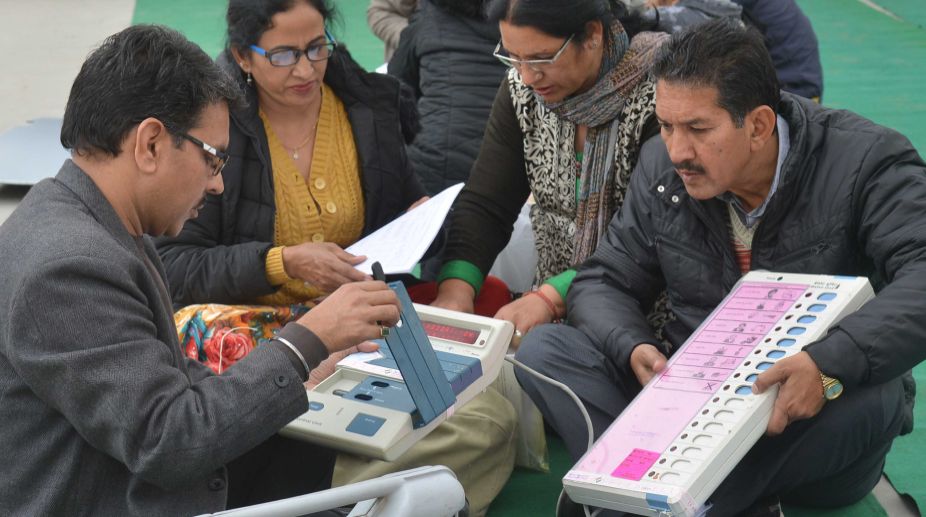Claiming that electronic voting machines (EVMs) can be tampered with "in several ways", two activists today challenged the Election Commission (EC) to prove the reliability of the machines in the presence of international experts.
Tehseen Poonawalla, who calls himself a Congress supporter, and Election Watch convenor VV Rao also sought answers to 21 questions from the EC, in a bid to ensure a transparent poll process.
Advertisement
They flagged the concern a day after an Aam Aadmi Party (AAP) MLA made a "live demonstration" in the Delhi Assembly on how the EVMs could be rigged.
Using an EVM prototype, Saurabh Bhardwaj, the AAP MLA, had claimed that anyone aware of a "secret code" could tamper with the machine by feeding the code into it at the time of casting vote.
"EVMs can be tampered with in several ways. Why doesn't the EC open up this challenge for international hackers, media and election commissioners of foreign democracies to witness," Poonawalla said during a press briefing here.
"If EVMs cannot be tampered with, it is great. But if they can be (tampered with), it will be out in front of the world," he added.
Poonawalla said the questions he raised stemmed from the results of February's Pune civic polls in which, he alleged, the total votes polled and counted did not tally in 41 of the 160 wards.
Without naming anyone, he alleged that a "businessman" MP of the BJP from Pune had made "exact predictions" of the civic poll results.
This was the first time the saffron party won the civic polls in the Maharashtra city.
"If there is a discrepancy in the number of votes polled and counted, then we surely have a problem in a democracy," said Poonawalla, adding that using the voter verifiable paper audit trail (VVPAT) alone will not ensure transparency in the poll process.
The VVPAT machine dispenses a slip containing the poll symbol of the party the voter has opted for. The slip drops in a box, but the voter cannot take it home.
Poonawalla suggested to the EC to tally the EVM and the VVPAT votes in 50 per cent of the constituencies in the future.
Rao wondered why the EC was "reluctant" to invite those who had filed petitions in the Supreme Court challenging the reliability of EVMs and technical experts to the all-party meeting the poll watchdog had convened on May 12.
He also sought to know why the EC was posing a challenge to the theory of "EVM hacking" when it had "already been exposed" in 2010 that the machines could be tampered with, which led to the use of VVPATs.
Rao also asked the EC why was it not using VVPATs in every election in spite of a 2013 Supreme Court direction to that effect.
"When the EC had only around 59,000 VVPATs, why did it not prefer the paper ballot system in the recent elections, which was the only option left when it was not in a position to comply with the Supreme Court direction," he wondered.











